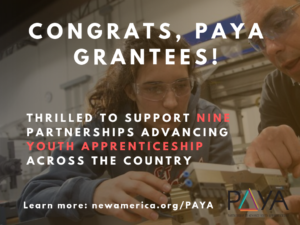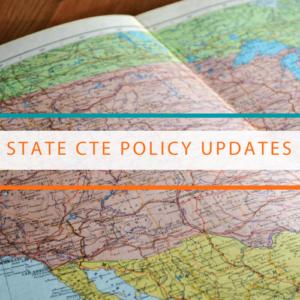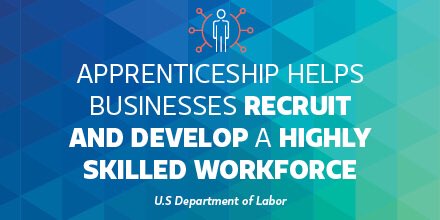This week lawmakers in the House have continued to circulate a Dear Colleague letter in support of funding for the Carl D. Perkins Act (Perkins V) and the high-quality Career Technical Education (CTE) programs it supports. In addition, the U.S. Department of Labor (USDOL) signed an agreement with the Austrian government related to apprenticeships while the Congressional CTE Caucuses continue to grow.
 Congress Set to Return Next Week
Congress Set to Return Next Week
Over the last two weeks, lawmakers in Congress have been in respective states and districts for their annual springtime recess. Both the House and Senate are scheduled to return next week to resume work on a host of issues. Chief among these agenda items is continued work on the federal fiscal year 2023 (FY23) budget and appropriations process. These efforts formally began with the release of President Biden’s FY23 budget request a few weeks ago. Lawmakers are in the process of analyzing and considering aspects of this request, which will include opportunities for the heads of federal agencies—including U.S. Secretary of Education Miguel Cardona—to testify before relevant Congressional committees regarding the contours of the budget request.
Next week, Secretary Cardona is scheduled to testify before the House Appropriations Subcommittee on Labor, Health and Human Services, Education, and Related Agencies about the Biden Administration’s FY23 funding requests for programs overseen by the U.S. Department of Education, like Perkins V). As a reminder, CTE Caucus Co-chairs Reps. Jim Langevin (D-RI) and Glenn “GT” Thompson (R-PA) are circulating a “Dear Colleague” letter in the House calling for robust funding for Perkins V as part of this process. Advance CTE encourages its members to contact your members of Congress soon and ask them to sign-on to this important letter to ensure a strong funding result as part of the wider federal budget and appropriations process this year. To do so, click here!
Federal Agencies & Austria Sign Apprenticeship MOU
Late last week, the heads of the U.S. Departments of Labor (USDOL), Education (ED), and Commerce, along with the Austrian Minister for Digital and Economic Affairs Dr. Margarete Schramböck announced that their respective agencies had signed a memorandum of understanding (MOU) to expand Registered Apprenticeship Programs (RAPs) in the United States among Austrian companies. In 2020, Austria invested $17.8 billion in the U.S., primarily in the IT, software, and industrial equipment sectors. Federal agencies have signed similar MOUs in recent years with Germany and Switzerland, each aiming to increase awareness about RAPs and related career pathway opportunities. Read the signed MOU here.
Encourage Lawmakers to Join CTE Caucuses
In conjunction with the House and Senate CTE Caucuses, Advance CTE and ACTE are working to encourage Senators and Representatives over the next several weeks to join their respective CTE Caucuses, if they have not done so already. To find out if your Members of Congress have joined their respective Caucus, you can review House and Senate membership lists. Membership in these caucuses is an important way for lawmakers to signal their support for CTE and the millions of learners across the country who enroll in these programs. To encourage your Senator or member of Congress to join, click here and scroll down to the request form corresponding to your needs.
Steve Voytek, Policy Advisor


 Build Your Future is hosting a construction video contest, I BUILT THIS, and giving away more than $20,000 in prizes. Learn more and submit a video
Build Your Future is hosting a construction video contest, I BUILT THIS, and giving away more than $20,000 in prizes. Learn more and submit a video  Some states are exploring how to leverage apprenticeships to award college credit to learners. For instance, the Colorado legislature passed
Some states are exploring how to leverage apprenticeships to award college credit to learners. For instance, the Colorado legislature passed  The Partnership to Advance Youth Apprenticeship (PAYA), a multi-stakeholder initiative, just announced its nine grantees under the first joint philanthropic investment to expand youth apprenticeship in the United States. These grantees – selected from an extremely competitive pool of over 220 applicants from 49 states and Puerto Rico – will launch and expand high-quality youth apprenticeship programs in multiple cities, regions, and states, and in a range of industries. The grantee recipients are:
The Partnership to Advance Youth Apprenticeship (PAYA), a multi-stakeholder initiative, just announced its nine grantees under the first joint philanthropic investment to expand youth apprenticeship in the United States. These grantees – selected from an extremely competitive pool of over 220 applicants from 49 states and Puerto Rico – will launch and expand high-quality youth apprenticeship programs in multiple cities, regions, and states, and in a range of industries. The grantee recipients are: As the legislative session moves forward, states have passed laws to increase awareness of and expand access to Career Technical Education (CTE) opportunities for each learner.
As the legislative session moves forward, states have passed laws to increase awareness of and expand access to Career Technical Education (CTE) opportunities for each learner. (CTE) program of study, enhance the educational experience and better prepare learners for future career success. In June 2017, Advance CTE,
(CTE) program of study, enhance the educational experience and better prepare learners for future career success. In June 2017, Advance CTE,